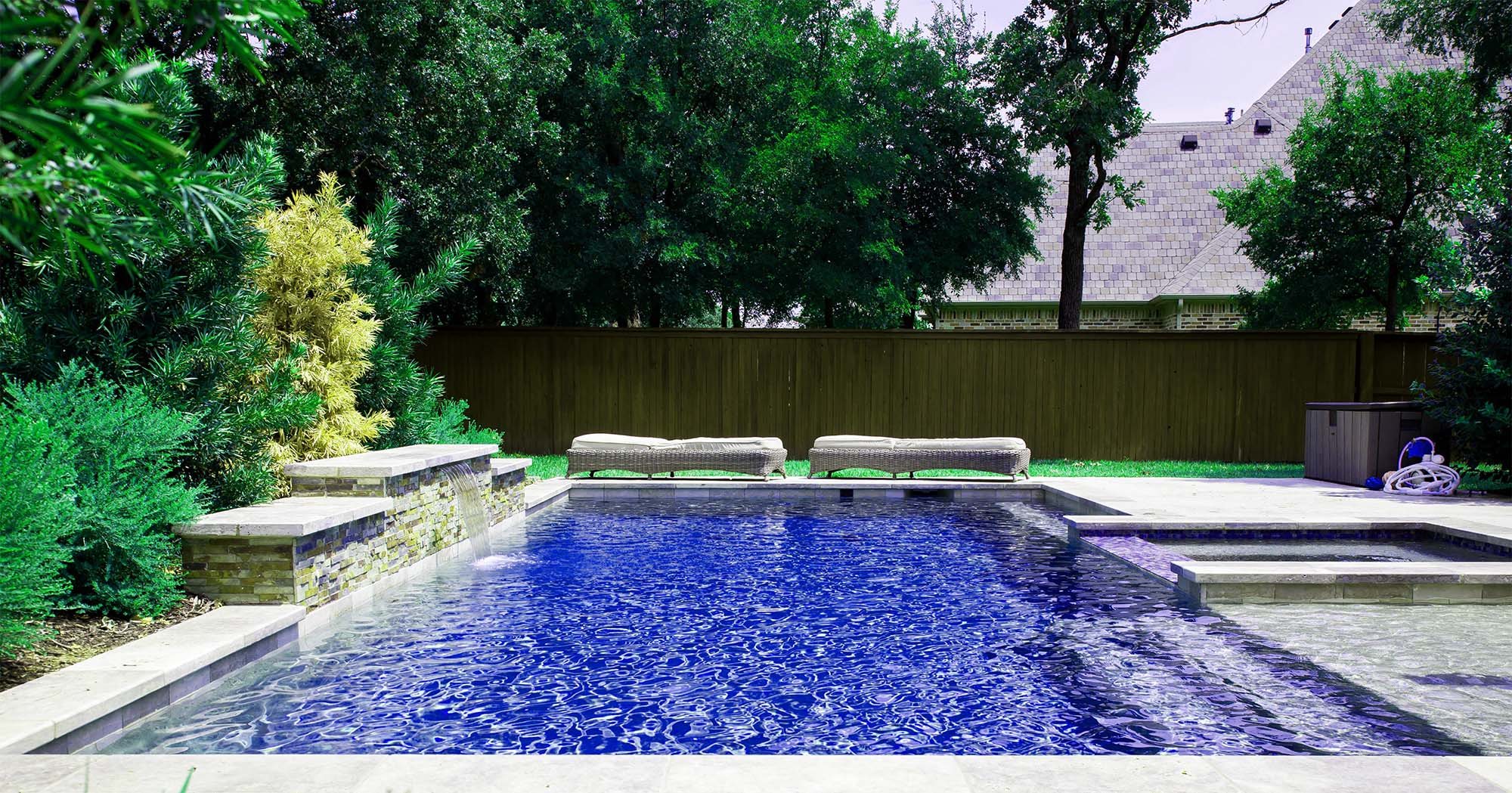Step 1: Layout
After you have experienced our custom pool design services and you and our designers have planned the perfect APH Custom pool for you, it’s time to get started. Wood framing is placed that shows the size, shape and location of your pool. The wood framing provides a guide for the excavation crew. Once the pool has been excavated, the framing helps secure the reinforcing steel for the shell and helps set the final elevation of your swimming pool.
–
Step 2: Dig
The excavation is an exciting time for the kids as well as the adults. Everyone loves big machinery, and you will be able to watch your backyard take the shape of your new swimming pool right before your eyes. The craftspeople make it look easy, but it takes a lot of time and experience along with a lot of hard work to gain the knowledge and ability to do what they do.
–
Step 3: Steel
Adding the steel is an important part of the structural integrity of your pool. You might find it interesting to see the workmanship and techniques used to bend the steel into the shape of your new swimming pool.
–
Step 4: Plumbing
Plumbing is an important part of installing a pool and can get complicated depending on the features you have chosen. The plumber will put in the circulating system, main drain and skimmer. In addition, he will install other features based on your pool design, for example a pool sweep line that draws water from the pool and brings it to the filtering system. He will also begin plumbing in the returns, therapy jets, deck jets, sheer descent, or any other water features that return the water to the pool after filtration.
–
Step 5: Gunite
Gather the family or the neighborhood kids to watch the hole in your backyard become the shell of your new swimming pool. Gunite is a type of concrete that is used to create the shell. Experienced craftspeople use considerable strength to lift the hose filled with pressurized concrete and guide it to the place where the concrete needs to be. It is amazing to watch the craftspeople sculpt the concrete into the shape of your pool, spa, steps, swim-out, tanning ledges and any other features you have chosen.
–
Step 6: Tile and Coping
Laying the tile and coping requires detail orientation, skill and focus. The skilled mason is a craftsperson as well as an artist. To add beauty, he installs the tile that you chose to the location in the pool design. Tiles often decorate the perimeter, steps, swim-out and tanning ledge of your pool. Tile is one of the details of a pool that often catches the eye and imagination.
–
Step 7: Electric
Most of us don’t think about electricity when we think about swimming pools, but the electrician is the unsung hero. Many of the amazing, beautiful, and relaxing features of your pool and spa require power. The electrician connects everything we have installed to the power source, making it all work beautifully.
–
Step 8: Deck Set-Up
During the rough decking stage, an experienced craftsperson performs important foundation steps for the deck area. He sets the pitch of the deck area, builds any riser steps, installs the deck drain and pours the concrete.
–
Step 9: Interior Finish
The interior finish is a concrete coating on the floor and walls of the pool. Craftspeople need both strength and expertise to direct the flow of pressurized concrete and then to use trowels to knead the surface into the final product. It’s an amazing sight, which is usually followed by another amazing sight: water flowing into the swimming pool! In most cases, they will start the water immediately after they finish the plastering process.
–
Step 10: Start Up
At this point, your swimming pool is almost ready for you to dive in. A start-up technician will test that everything is working properly. For example, the technician will start the circulating pump and set the timer. If your pool design has eyeball fittings in the returns and jets, he will install them. He will also brush and vacuum the pool and clean any residue off the tile. The technician will simmer and balance the water and start the slow chlorine start up. In a slow chlorine start up, chlorine is added slowly over a period of a few days. So, it will take a few more days for the water to turn completely blue.



